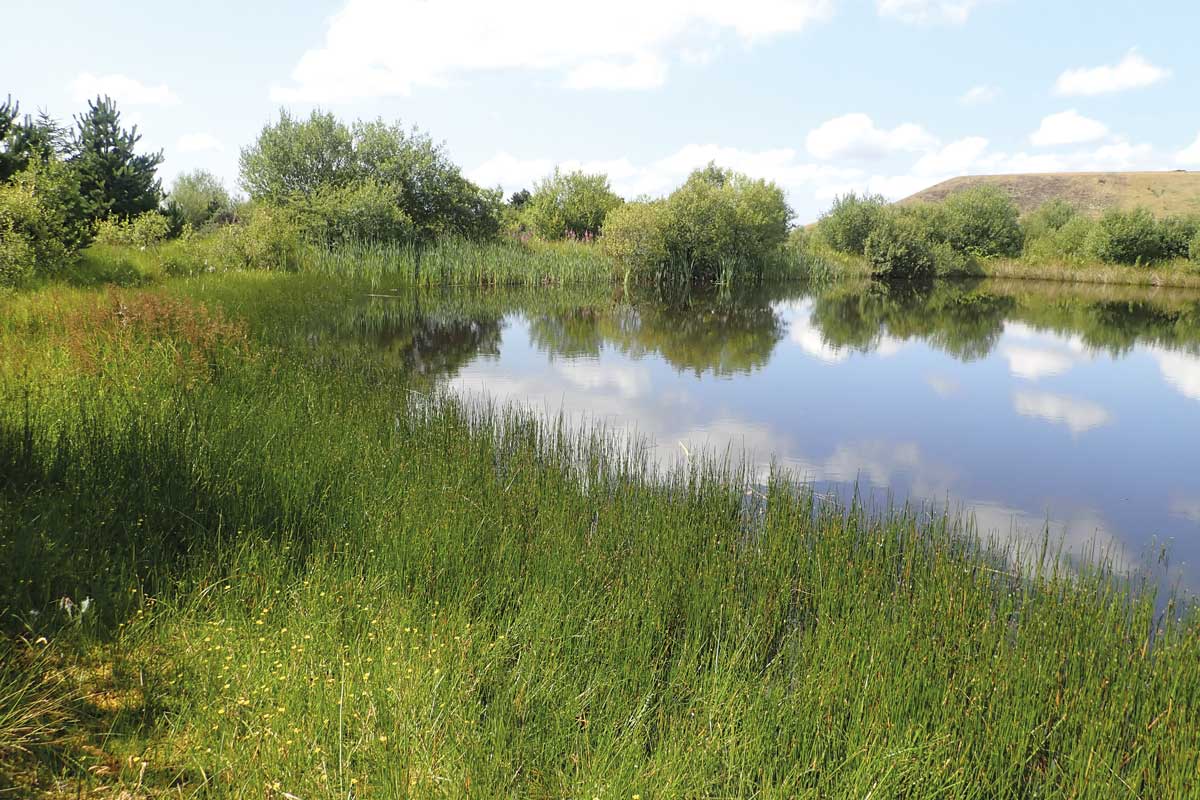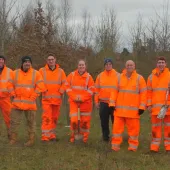Last chance to influence the Biodiversity Net Gain calculator

First published in the September 2022 issue of Quarry Management
Final Defra consultation under way – deadline 27 September 2022
Dr R.N. Humphries, Blakemere Consultants and Celtic Energy
In England, a metric is to be used to calculate the required 10% gain in biodiversity value before developments can proceed[1]. On 2 August this year, Defra launched its final consultation for Natural England’s proposed Biodiversity Metric (now Version 3.1) and submissions are to be received by 27 September[2]. The purpose is to finalize the current metric as Version 4 before it is adopted in England by the Secretary of State from November 2023.
Importantly, it is the last opportunity to influence the form and function of the metric, given the review cycle is likely to be three years or more. The Mineral Products Association (MPA) has worked very hard to argue the industry’s case for its application specifically to recognize that mineral extraction is different to other types of development and for the metric to include values that are appropriate for minerals development. Whilst the MPA will be making strong representation, it is important for as wide a response as possible from all who are engaged in the process of obtaining planning consents for mineral reserves.
The consultation takes the form of eight questions and provides helpful background. In my view, three questions are of particular importance. Question 3 requests case studies that should be produced. At present no examples of mineral workings have been published, although a couple have been prepared by the industry. These should be supplemented with others to demonstrate the lower risks and wider opportunities involved in the delivery of biodiversity gain with mineral development; this should include high- and very-high-valued habitats. Of importance, examples should show the significance of mineral workings in providing other essential resources, ‘ecosystem services’, and functions, such as water storage and flood attenuation, and the biodiversity they provide; these should be acceptable alternatives to the overly restrictive like-for-like Rule 3 within the current Metric.
Question 4 simply asks if there is agreement with the described measures and proposals to help with applying the metric to minerals developments. This refers to the more helpful way the current Metric deals with phased development, which the MPA successfully lobbied for.
Question 5 is probably the most important for the industry as it provides an opportunity to comment on the workings of the current Metric and allows the questioning of its fitness for purpose. It asks if there are any improvements to make to the components of Metric 3.1 regarding: a. the metric calculation and tool (the spreadsheet, values, and calculations); b. the user guide (including the Rules and Principles for using the metric); and c. habitat condition sheets (included in the technical supplement). Although Defra proposes to add specific guidance for mineral applications in the User Guide for the finalized Metric Version 4, which might provide scope for deciding appropriate multipliers with the local planning authority’s agreement, this will not deal with the fundamental limitations of the current Metric.
The current Metric is unnecessarily complex and should have been a simple arithmetical means of calculating the mandated 10% biodiversity gain (ie for every 1ha or 1km lost, 1.1ha or 1.1km are to be provided). Instead, because of the aspirations of the designers and other influential stakeholders, it mixes political-based policy objectives with environmental variables and employs dubious mathematics in combining real numbers and a mix of category-based values. This is made worse where multiple habitats are involved as value scores are aggregated. Why is a multiplier needed for spatial context when the only need is to record whether it does or does not comply with policies? Why cannot the potential risks of difficulty and delays in achieving the target condition simply be flagged for the decision makers to judge against track records? It raises the fundamental question why England needs such a convoluted tool when the other three devolved countries seemingly do not? Consequently, minerals will be treated differently depending on where they are located.
In answering Question 5a, it appears that the multiplier values used in metric calculations, such as for ‘difficulty’ and time to reach defined conditions in the creation and enhancement of habitats, are derived by a process of ‘judgement’ and so values of specific examples, such as mineral sites, cannot be provided for scrutiny. Additionally, we understand, those involving high- and very-high-valued (ie distinctiveness) habitats have been deliberately weighted to discourage development. Hence, for the Metric to be credible, transparency is needed, particularly if Rule 6 (ie the justification for exceptions) is to be invoked for mineral applications as the only way forward (see also 5b below). These multipliers, if not abandoned, should be based on data from mineral schemes if they are to be applied to minerals development.
In answering 5b, the Principles and Rules set out in the User Guide are crucial in the understanding of how the outputs of the Metric are to be used in the preparation of the mandated Biodiversity Gain Plan. The planning authorities are to rely upon the Plan in the decision-making process for giving or withholding consent for mineral schemes. In the absence of mineral-specific exemptions/provisions in the Metric, it has been suggested the industry will have to rely on Rule 6 in justifying its case alternative outcomes/deviations in the use of the current Metric. How this will work within the planning framework and the provision of the Act is uncertain and clearly open to dispute and delay in the granting of planning consents. Does it mean that the machinations of the Metric must be completed but the outcomes then get overruled in the Plan? Rule 3 is another point in question where like-for-like gains could restrict sensible development of natural resources and concomitant biodiversity gains. The Metric should be amended to enable ‘unlike’ options where there is justification.
Question 5c is whether the individual Habitat Condition Sheets in the Technical Supplement should be a stand-alone document. A more fundamental need is to apportion the condition criteria to the Condition Score according to level of importance, rather than just the number of passes, which vary according to habitat. It is acknowledged that the quality of features before loss and after compensation are very important biodiversity gain considerations. But again, the multiplication of real numbers with assigned category values and their aggregation is problematic, so another way needs to be found.
In the above I have set out some of my concerns about the current Metric and the risk of carryover of its flaws into the one to be adopted by the Secretary of State. However, the main purpose of this article is to encourage as many readers as possible who are involved in the minerals industry to respond with their views by 27 September 2022.
References
- https://www.legislation.gov.uk/ukpga/2021/30/schedule/14/enacted
- https://consult.defra.gov.uk/defra-net-gain-consultation-team/technical consultation_biodiversitymetric/
Additional sources of information
- HUMPHRIES R.N.: ‘The Biodiversity Metric 3.0 and Minerals’, Quarry Management, September 2021, pp13-17.
- PAYNE D.: ‘Site Restoration and After-use’, Quarry Management, May 2022, pp35-38.
- PANKS S. et al.: 2022a, Natural England Joint Publication JP039 - Biodiversity metric 3.1: Auditing and accounting for biodiversity – User Guide. http://publications.naturalengland.org.uk/publication/6049804846366720
- PANKS S. et al.: 2022b, Natural England Joint Publication JP039 - Biodiversity Metric 3.1: Auditing and accounting for biodiversity – Technical Supplement. http://publications.naturalengland.org.uk/publication/6049804846366720
Subscribe to Quarry Management, the monthly journal for the mineral products industry, to read articles before they appear on Agg-Net.com








